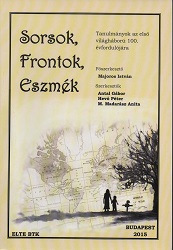A halál villamoson érkezett. Fővárosi hétköznapok a spanyolnátha árnyékában
Death arrived by Tramway. Capital Everydays in the Shadow of the Spanish Flu
Author(s): Eleonóra Géra
Subject(s): Cultural history, Local History / Microhistory, Social history, Pre-WW I & WW I (1900 -1919)
Published by: Eötvös Loránd Tudományegyetem, Új-és Jelenkori Egyetemes Történeti Tanszék
Keywords: Spanish flu; control; World War I; administration; Budapest; supply problems; hinterland; tramtransportation;
Summary/Abstract: The Spanish flu occurred in the summer of 1918 in Budapest. The protection against the disease was complicated by the fact that the viruses had not yet been known and the Spanish flu was not included in the law on notifiable diseases. Budapest city leaders acknowledged for the first time in September 1918 that there in an epidemic. The problem of introducing restrictive measures to contain the disease divided the city leadership. They wereafraid of the panic and the political uncertainty due to the lost war, and the power of the crowds. The necessary foodstuffs for everyday life, other articles, but also the essential drugs were difficult to obtain. Therefore, the measures to limit the tram transportation often led to crowd scenes, spontaneous demonstrations. This is how the tram became the symbol of the Spanish flu in the capitol.
Book: Sorsok, frontok, eszmék. Tanulmányok az első világháború 100. évfordulójára
- Page Range: 733-752
- Page Count: 20
- Publication Year: 2015
- Language: Hungarian
- Content File-PDF

